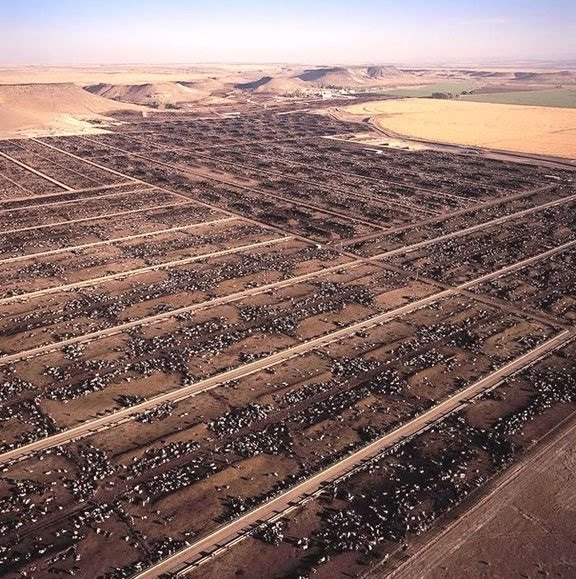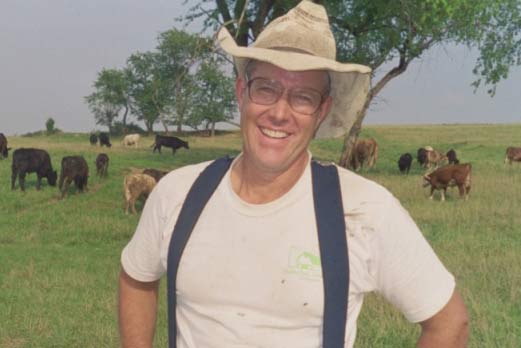Let me build another case for getting away from industrialized food production and coming to Panama. Cattle, cattle and more cattle. By the end of this article you will never forget what a CAFO is.
Although I am not an avid reader of Wealth Daily, this article caught my eye and opened them wide!!
The Free Market is a Lie!
By Jeff Siegel | Friday, February 1st, 2013
According to the Union of Concerned Scientists, US taxpayers pony up about $7 billion a year to subsidize or clean up after Concentrated Animal Feeding Operations (CAFO), and that doesn’t include another $4.1 billion that’s been spent over the years to control leaking manure storage facilities.
And let’s not forget the reason Japan put the kibosh on U.S. beef imports to begin with was because of fears over bovine spongiform encephalopathy, better known as mad cow disease.
If you want to trace the origins of mad cow, look no further than the CAFOs that fed their cows rendered cattle and chicken feces. They basically turned their herbivores into carnivores, and the result was catastrophic from both a public health and economic perspective. No one talks about this very much but when a bunch of children get sick and die from an e coli outbreak or worse, you better believe it will be on CNN for months and then the government will take action.
But that’s just the tip of the iceberg…
A Steady Diet of Subsidies
According to a study published by researchers at Purdue University, there are now concerns that manure generated by CAFOs could result in infectious disease outbreaks in surrounding communities. And let me remind you again: US tax dollars keep these operations humming, even as they increase output to meet heightened demand in other parts of the world.
This, my friends, is why I only buy my meat from local farmers who treat their cows with respect, and allow them to eat what God intended them to eat — grass! (Editor: Think Panama!!)
Sure, it costs me a few more bucks. Because unlike those big industrial farms, these local farmers don’t get to feed from the government teat. They don’t have access to those billion-dollar subsidies, so they have to endure the real cost of production. Imagine that! (Editor: Here in Panama, I can buy Filet Mignon for $5 per pound, from natural grass fed happy cows!)
Still, it’s worth it. The meat tastes much better, and it’s loaded with more of the vitamins and minerals you can’t get from those industrially-produced cows…
Numerous studies (not funded by Big Ag) have shown grass-fed beef is:
- Lower in total fat
- Higher in beta-carotene
- Higher in vitamin E
- Higher in the minerals calcium, magnesium, and potassium
- Higher in total omega-3s
- A healthier ratio of omega-6 to omega-3 fatty acids
- Higher in CLA, a potential cancer fighter
- Higher in vaccenic acid, which can be transformed into CLA
- Lower in the saturated fats linked with heart disease
Yes, when you allow cows to be cows — and not secluded, cannibalistic, soulless widgets — you are rewarded with nutritionally superior sustenance.
Of course, not all cows shoved into CAFOs are forced to eat meat. Many are fed a steady diet of corn and soy which (surprise, surprise) is nearly all sourced from other industrial farms that also land billions in taxpayer subsidies every single year.
Folks, how long are we expected to shell out our hard-earned money to these industrial agriculture giants?
The way I see it, if you can’t operate competitively without my tax dollars, then your business model is inferior.
In a REAL free market, one must ask, shouldn’t healthy competition dictate which farms prosper and which farms fail?
Of course, to assume we have a free market when it comes to farming is naïve…
The Bottom Line
The hard-working family farmer that doesn’t receive those fat subsidy checks from the government is living honorably and producing quality food for Americans.
Meet Joel Salatin at PolyFace Farms
He is doing right by the land, right by the consumer, and right by the taxpayer.
He is the one that should be congratulated for maintaining a sense of normalcy and responsibility to food production.
And he’s the one that should be supported by those who have had enough of government interference in what’s supposed to be a free market economy.
To drive this point home, I leave you with this quote from libertarian organic farmer, Joel Salatin, regarding the price of what he calls “clean food.”
… Whenever I hear people say clean food is expensive, I tell them it’s actually the cheapest food you can buy. That always gets their attention. Then I explain that with our food, all of the costs are figured into the prices. Society is not bearing the cost of water pollution, of antibiotic resistance, of food-borne illnesses, of crop subsidies, of subsidized oil and water — of all the hidden costs to the environment and the taxpayer that makes cheap food seem cheap. No thinking person will tell you they don’t care about all that. I tell them the choice is simple: You can buy honestly priced food or you can buy irresponsibly priced food.
Live honorably, live free…
P.S. If you do not live in Panama and you’re looking for a local, responsible farmer in your neck of the woods, check out a website called eatwild.com. The folks over at Eatwild provide a comprehensive directory of responsible farmers around the country.
Here is a short video with Joel Salatin

 l
l